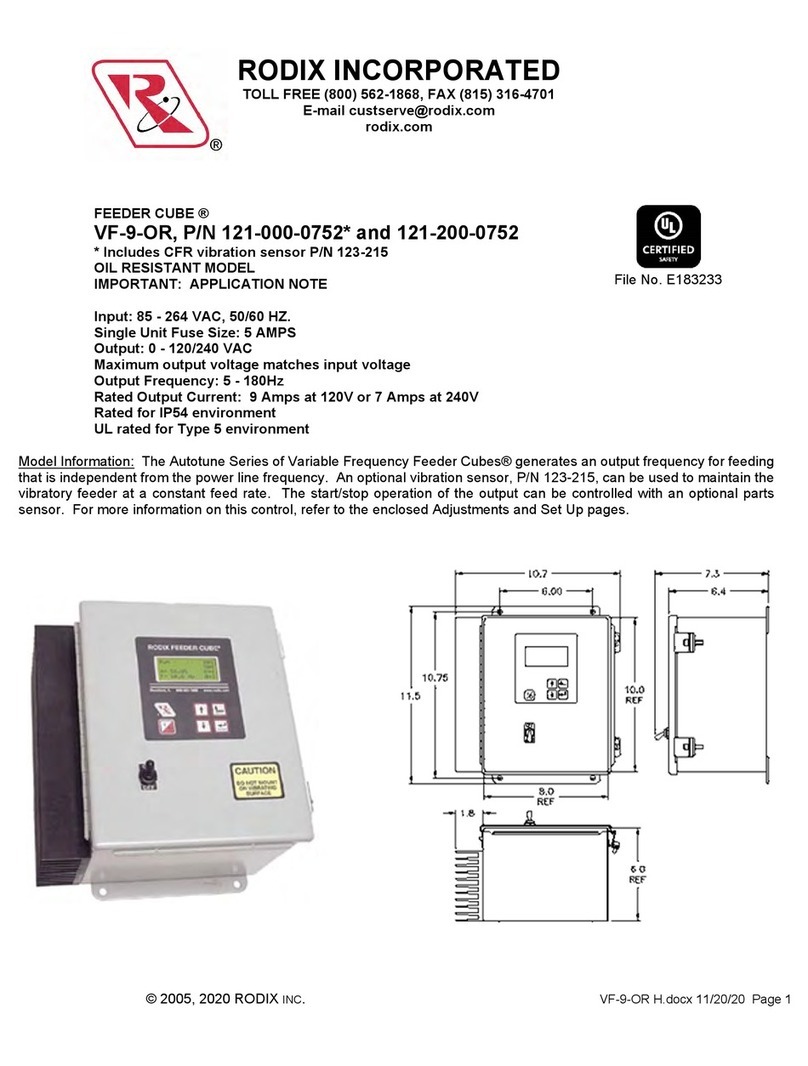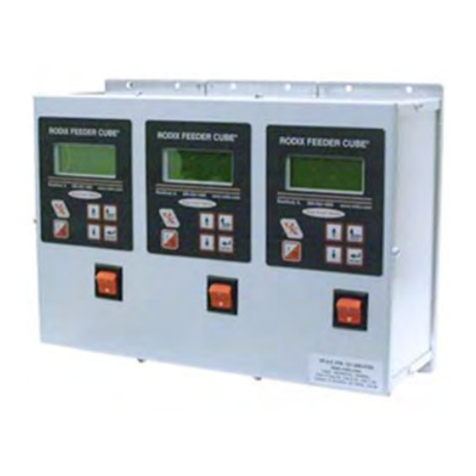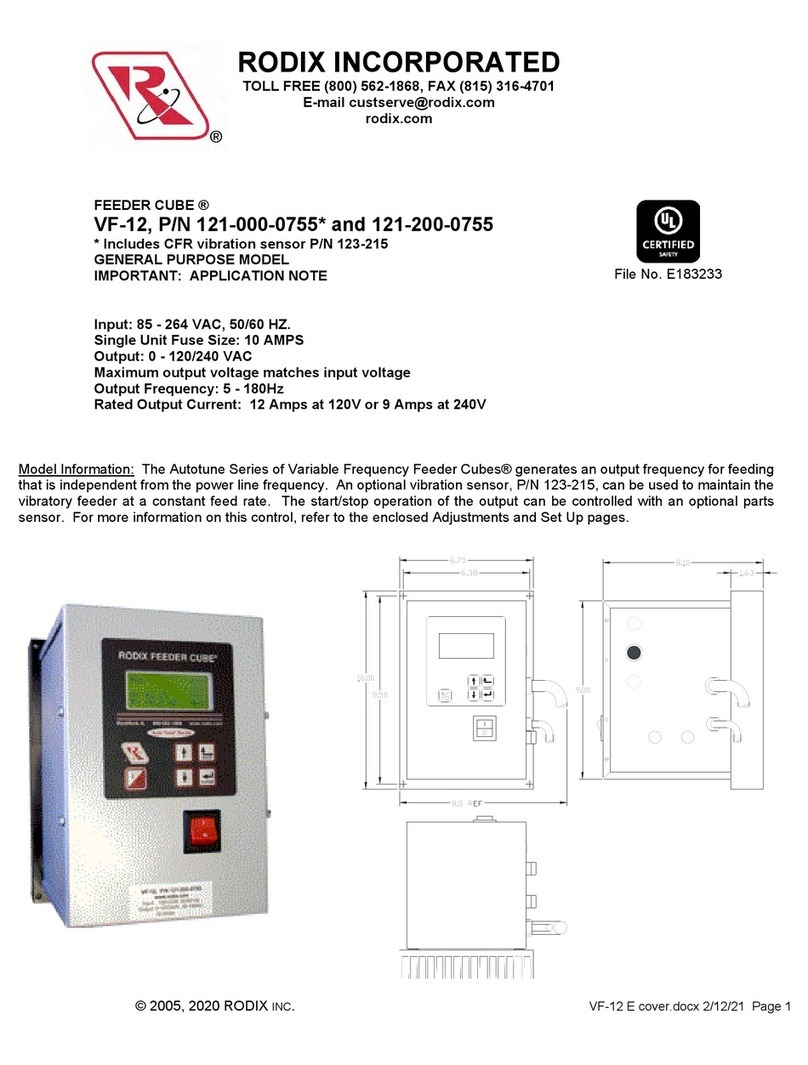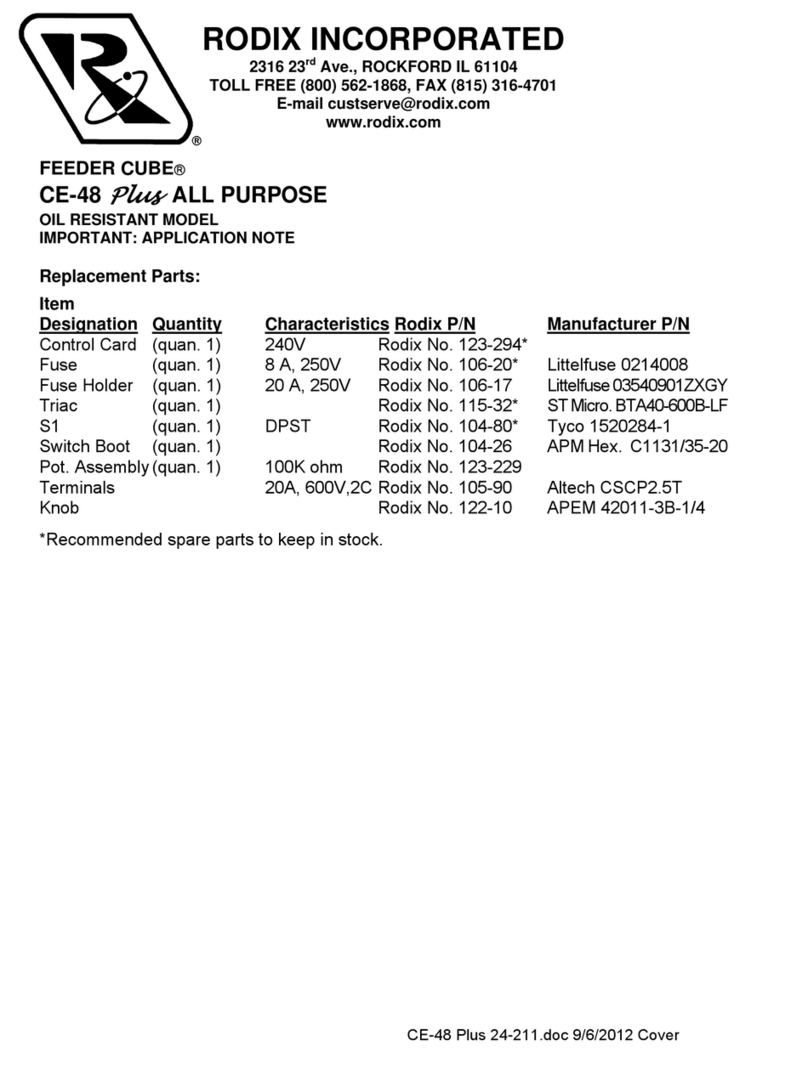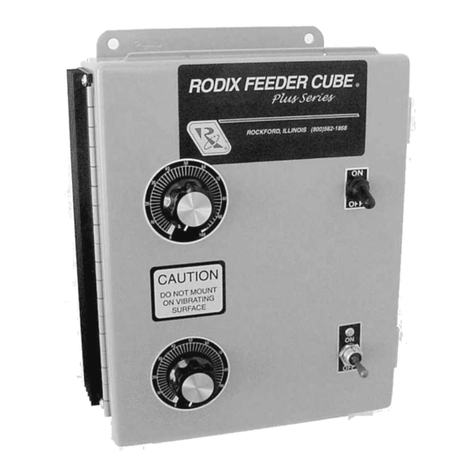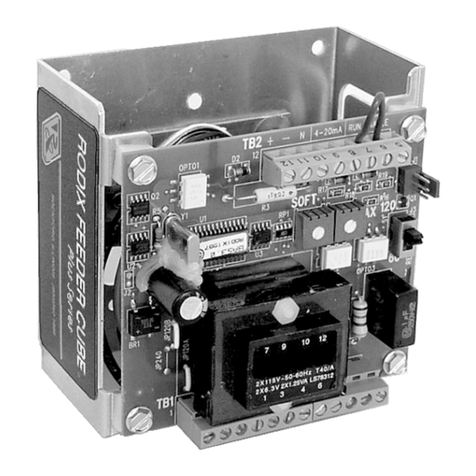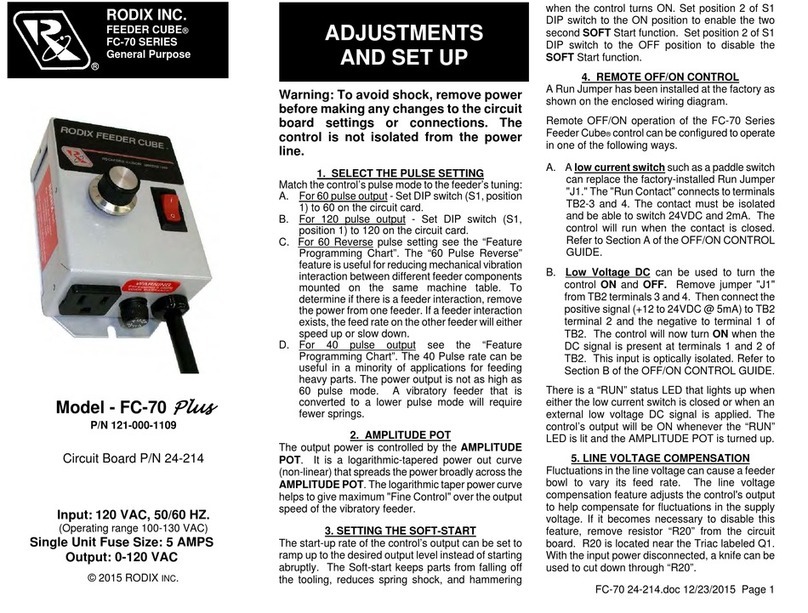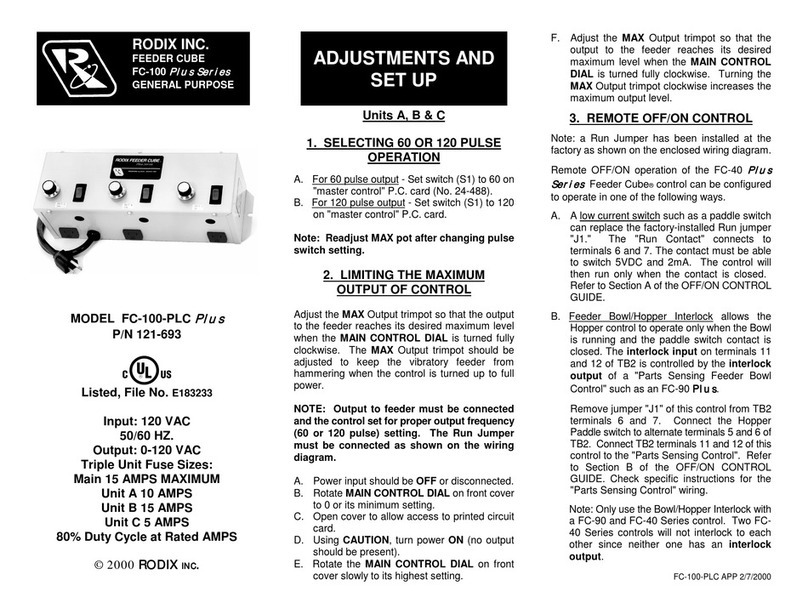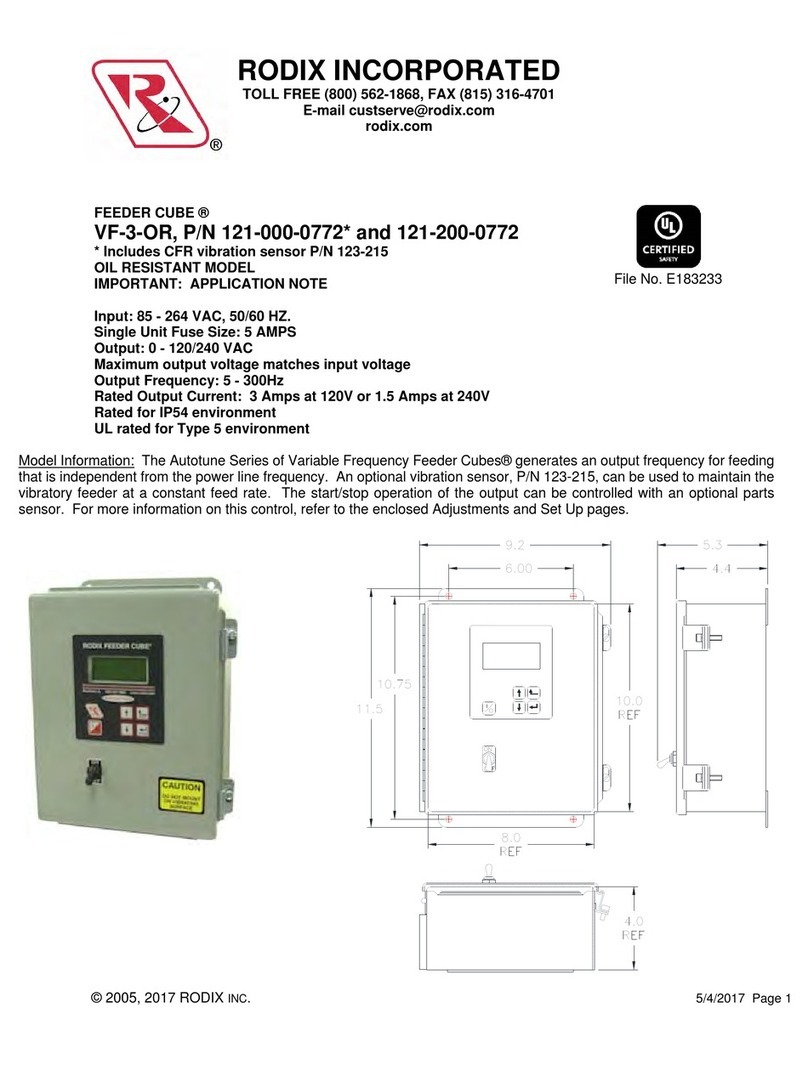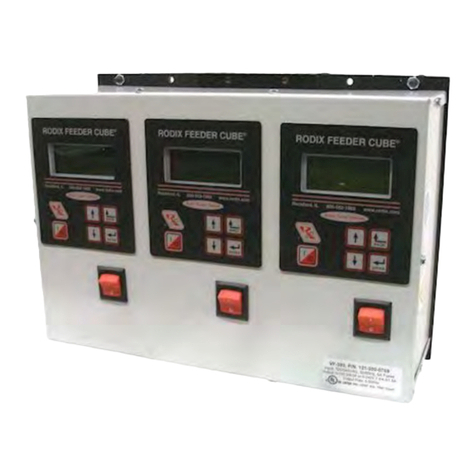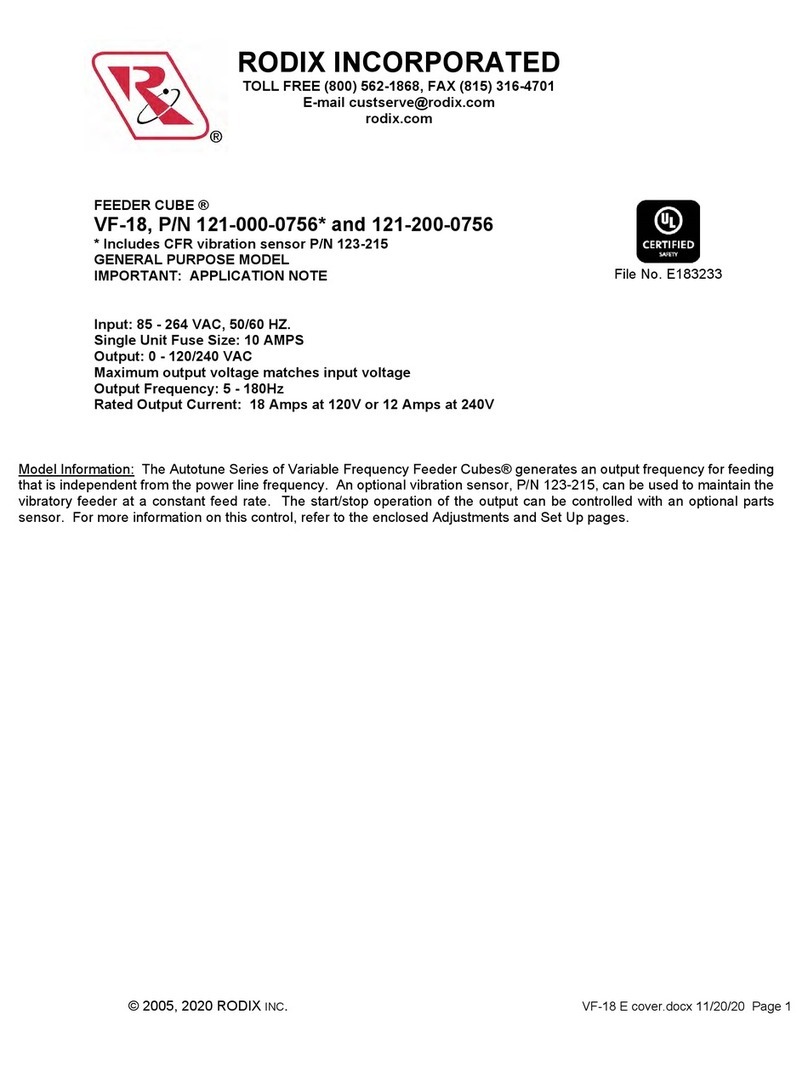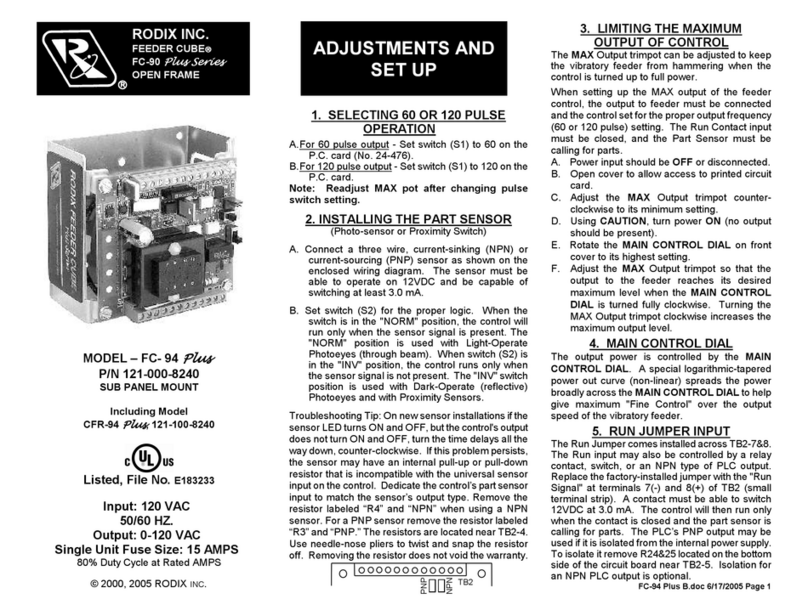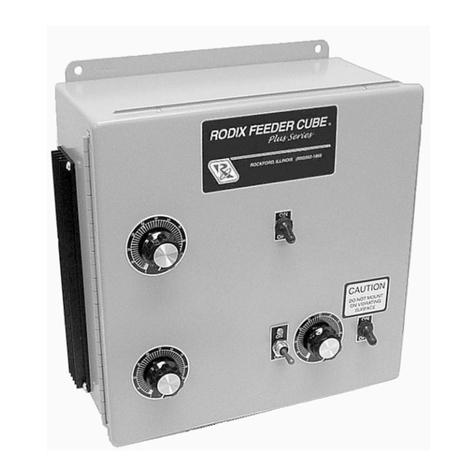
Removejumper "J1" of this control from terminals6
and 7. Connect the Hopper Paddle switch to
alternateterminals 5 and 6. Connect TB2 terminals
11 and 12 of this control to the "Parts Sensing
Control". Refer to Section B of the OFF/ON
CONTROL GUIDE. Check specific instructions for
the "Parts Sensing Control" wiring. Two FC-40
Seriescontrols will not interlock to eachothersince
neither one has an interlock output.
C. Low Voltage DC can be used to turn the control
ON and OFF. Movejumper "J1" from terminal 7, to
terminal 5, (6 remains the same). Then connect
the positive signal (+10 to 30VDC @ 10mA) to
terminal 12 and the negative to terminal 11 of TB2.
Thecontrol will now turn ON whenthe DC signal is
present at terminals 11 and 12 of TB2. Thisinput is
optically isolated. Referto Section Cof the OFF/ON
CONTROL GUIDE.
8. REMOTE SPEED CONTROL
Remote control of the power level can be accomplished
by the following methods:
A. 4-20mA signal from a PLC can be used to remotely
vary the output of the control instead of the Main
Control Dial. The 4-20mA input is automatically in
control whenever a 4-20mA signal is applied to the
control (terminals TB2-8 & 9). The Main Control dial
setting is ignored whenever there is a 4-20mA signal.
The 4-20mA input is transformer isolated from the
power line. In an environment with high electrical
noise, use a shielded cable for the 4-20mA signal.
The“S1 Programming Chart”shows how changeto0-
20mAspeed control instead of the default of4-20mA.
B. A 0-5VDC Analog input signal may be applied in
place of the Main Control Dial at H1. The 0-5VDC
input is transformer isolated from the power line.
9. LINE VOLTAGE COMPENSATION
Fluctuations in the line voltage can causea feeder bowl
to vary its feed rate. The line voltage compensation
feature adjusts the control's output to help compensate
for fluctuations in the supply voltage. If it becomes
necessary to disable this feature, set “Disable LVC”
from the S1 programming chart.
10. SUPPLEMENTARY FEATURES
Special supplementary software features can be
enabled on the 24-210/24-211 circuit boards The
features include: linear pot taper, 0-20mA control,
empty bowl timer, low pulse rates, and two speed
pots. See the S1 Switch Programming Chart. For
more feature information download (or request from
RODIX) the FC-40
Plus
Advanced Application Note
24-210/24-211.
11. STATUS LEDs
When any of the inputs are active, the associated
LED will turn ON. When the RUN inputconditions are
met, the RUN LED will turn ON. See section 6 and
the wiring diagram’s ON/OFF Control Guide for more
information on how to satisfy the RUN conditions.
WARNING:
Fuses should be replaced with a Bussman ABC
or Littelfuse 3AB "Fast Acting" type or
equivalent of manufacturer's original value.
Mounting this control on a vibrating surface will
void the warranty.
WARRANTY
Rodix Control Products are Warranted to be free from
defects in material and workmanship under normal use
for a period of two years from date of shipment. Forthe
full description of the warranty, terms, and software license,
please contact the factory.
For assistance installing or operating your Rodix Feeder
Cube® please call the factory or visit our web site.
Technical help is available to answer your questions and
fax any needed information. To return a control for IN or
OUT of warranty service, please ship it prepaid to:
Rodix Inc., ATTN: Repair Department
If under warranty, Rodix will repair or replace your control at
no charge; If out of warranty, we will repair it and you will be
billed for the repair charges (Time and Material) plus the
return freight. Quotes for repairs are available upon
request. A brief note describing the symptoms helps our
technicians address the issue.
Feeder Cube® is a registered TM of Rodix Inc.
TROUBLESHOOTING
For the control to run: The MAIN CONTROL DIAL
must be turned up or have over 4mA at the 4-20mA
input. Either the DIRECT LED must be lit or both the
INTERLOCK and EXT VOLTS LEDs must be on. To
light the DIRECT LED, connect a Run Jumper at
TB2-6 & TB2-7. To light the INTERLOCK LED, a
Run Jumper must connect TB2-5 to TB2-6. To
illuminate the EXT VOLTS LED, TB2-11 & 12
needs a 10-30 VDC signal. See the “FC-40 Plus
TroubleshootingGuide” for moreinformation. If the
motor is noisy, flip the 60/120 dip switch to 120.
DIMENSIONS
RODIX, INC.
2316 23rd Ave., Rockford, IL 61104
Toll Free (800) 562-1868, FAX (815) 316-4701
www.rodix.com
FC-42-DC Plus 24-210.doc 10/8/2012 Page 2
S1 Programming Chart
Program Description S1 Switch Positions
SW3 SW4 SW5
Standard Program 0 0 0
Linear Pot Taper 1 0 0
0-20mA option 0 1 0
Empty Bowl Timer 1 1 0
Disable LVC 0 0 1
2-Speed Operation 1 0 1
30/40 Pulse Operation 0 1 1
Low Amplitude at “1” 1 1 1
4.0
2.0
4.04.8
9.0
8.0
8.75
4.5
